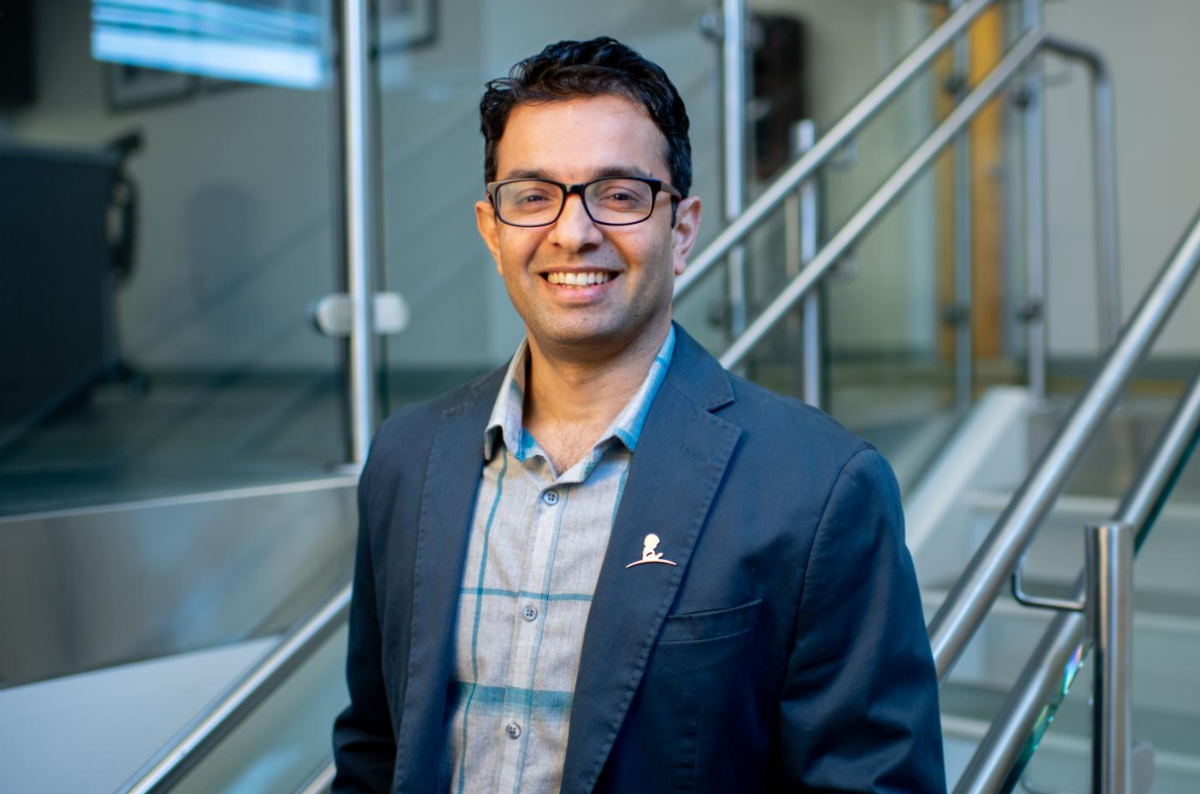Georgetown University’s Lombardi Comprehensive Cancer Center Survivorship Research Initiative hosted a cancer researcher for a Mar. 8 seminar about genetically predicting future heart and metabolic diseases for childhood cancer survivors.
Yadav Sapkota, an assistant member in the department of epidemiology and cancer control at St. Jude Children’s Research Hospital, was the seminar’s featured speaker. At the event, Sapkota said that thanks to advances in cancer treatment and care over the last several decades, the overall survival rate of childhood cancer has increased significantly.
However, Sapkota said that despite this increase in life expectancy, researchers still need to make progress in preventing the onset of late effects, or health problems that occur after cancer treatment has ended and the patient enters complete remission.
“This incredible success has been compromised by the parallel increase in the prevalence of late effects as the survivors grow into their adulthood,” Sapkota said during the seminar.
On average, childhood cancer survivors experience almost twice the disease burden of other adults when they age into adulthood, encountering higher rates of cardiovascular diseases, hormonal disorders and other conditions.
According to Sapkota, residual effects of cancer treatments like radiation therapy, a treatment that uses energy beams to kill cancer cells, contribute to the increased incidence of cardiac problems among childhood cancer patients as they grow older.
“There is a significant contribution by the exposure to radiation therapy that is increasing the risk of coronary artery disease in survivors,” Sapkota said.
Although Sapkota noted that several existing screening methods and prediction tools can detect survivors at high risk for developing late effects and explore intervention opportunities to reduce risk early on, current guidelines for predicting the onset of late effects like coronary artery disease or heart failure are limited.
“All of these guidelines and risk prediction tools are mostly utilizing demographic and cancer treatment variables, not beyond that,” Sapkota said. “We have also seen in multiple studies that there is a large risk variation despite survivors being exposed to the same treatment exposures, similar dose, suggesting other factors also contribute to the development of late effects in survivors.”
This discrepancy led Sapkota to explore another component that influences the risk prediction of outcomes in survivors: genetic factors. Sapkota said one risk prediction method based on genetics is to use a polygenic risk score (PRS), which measures all the genetic variation in a person’s genome that confers a risk for developing certain diseases or traits.
“If we use the PRS score, which is based on the common variants across the genome, then we can identify a lot more individuals at high risk,” Sapkota said.
In particular, Sapkota and his team published a study in 2021 that examined a sample of nearly 12,000 childhood cancer survivors.
According to Sapkota, the study showed that clinicians could accurately use PRS to detect patients at risk for developing coronary artery disease after receiving radiation therapy.
“PRS was useful in identifying more survivors who are at risk for developing coronary artery disease as they become older,” Sapkota said.
However, while using genetic factors like the PRS can allow for increased screening of individuals with the highest risk of developing late effects, it is crucial to ensure medical professionals’ access to this data will not affect patients’ opportunities for future medical treatments, according to biochemistry professor Jessica Jones.
“It would be critical to make sure the privacy of these individuals is protected and that the polygenic risk score has no effect on their ability to obtain healthcare later in their life,” Jones told The Hoya. “It’s important that the risk score is never used in screening for their access to insurance or other ways of getting access to healthcare.”
Sapkota said knowing that genetics can be used to predict the onset of late effects could, going forward, lead cancer researchers away from a treatment-centric prediction model for late effects, cementing the importance of incorporating genetic information into these predictions.
“We all had been thinking that cancer treatment is the primary driver, but that’s not actually the case,” Sapkota said.









